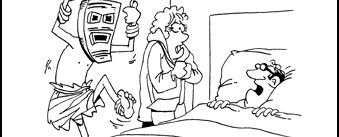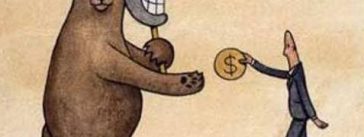In this episode of Truth About FX, Walter digs into trading style — and whether or not he identifies himself as a long term breakout trader. He also talks about catching that elusive Kangaroo Tail and Big Shadow and should you stack the odds. You’ll also learn in this podcast when is the “right time” to risk more.
Download (Duration: 08:32 / 9.77 MB)
In This Episode:
00:45 – stack odds
02:55 – “the pinch”
04:18 – meant to capture
06:44 – highly unlikely
08:01 – simply adjusting
Tweetables:
Adjust your risks based on what you want to avoid. [Click To Tweet].
Plug your number in and work it out. [Click To Tweet].
Each style varies with the trader. [Click To Tweet].
Announcer: Sometimes, forex trading is a wild and wooly place to be. That’s why Hugh is here, to post your questions to Walter, the naked forex guy. Hugh’s got questions and Walter’s got the answers. Here at the Truth About FX Podcast.
Hugh: Hi, Walter. How is it going?
Walter: Pretty good! How are you, Hugh?
Hugh: Very good. Today’s question is — I think, it is basically two questions. The first one is, is it right to say that your style could be categorized as a long term breakout style of trading? And, when you do see a setup like Kangaroo Tail or Big Shadow and it looks pretty sweet, do you stack the odds of… For you, I guess, this person is asking, meaning like do you risk more, or maybe do you pyramid, or something like that?
Walter: For better risk to reward. Actually, I wouldn’t say that. I would actually say like most of my trades are probably be classified as a swing.
Hugh: Swing trading.
Walter: Yeah, looking at support and resistance as potential spot to take like a counter market move. Almost like saying the market’s been going up, it hits this resistance so I sell or,the market’s been going down, it hits some support so I buy.
It’s really more of a swing trading. I mean, it depends on the systems. If you are looking at the Big Shadow or Kangaroo Tail, you can certainly trade them as trend continuation patterns but they normally won’t have all of the characteristics that I am looking for.
Obviously, these are all posted in the book and in the shownotes for this, the Naked Forex book. And, in the shownotes for this video, I can post two books for you, the Kangaroo Tail and the Big Shadows, since these are the systems that this person is actually asking about.
You can get those books if you want. Basically, most of my trades are swing trades. Some of them would be considered trend continuation or like waiting for a retracement and then you get a signal and so. Sort of like the trend has retraced and it throws a signal and then it’s like trend on again, that kind of thing or breakout.
For example, the last keys trade is a breakout. It is just a normal breakout with confirmation and that is basically all it is. That is, essentially. I mean, I guess you can apply these naked patterns in different ways as a trend continuation pattern, as a swing pattern or as a breakout but, most of mine would be classified as a swing trade.
The other one that I really like — and this one was highlighted by one of my friends, my trading student. He came up with a term “the pinch” and I thought it was awesome.
He did this webinar for us where he showed us and he is an amazing trader. He is like this number one ranked guy on a whatever — I cannot remember this signal’s platform that he’s on but he is really good.
What’s interesting is he trades rarely but he’s got like an 80 something win rate and he talks about the pinch. Which is, basically, if you think about it the market breaks through a support and resistance area and then it just comes back and tags it again and gives you a nice big shadow or something.
It is like my last keys but he is looking for these more with a strong move through a support or resistance area and then it just comes back and give it that little last touch on that area, on that zone from the other side.
For example, if it is a sell trade that breaks through a support and then it goes down there for while, comes back up, tags it again, gives you a nice signal on that retouch and then you just go from there.
Those can be so good and I really love taking those. I suppose those would be classified as trend continuation or breakout or whatever you want to call it. I like those as well but I would say that the vast majority of the trades that I take are simply swing trades.
They’re meant to be where you are capturing that fracto high or that swing point, that local high, local low. That is what they are really meant to capture. That would be the way that I would answer that one. That is a great question.
Hugh: I see. Cool! In the case of the pinch when it is a sweet setup, do you risk more or do you stack or anything like that?
Walter: Yeah, right. That is the second part of the question. No, I do not really do that. What I do is — and this is probably something that may interest people — what I do is I set my risk depending on the characteristics of the systems.
I’ll give you an example, let’s say that I am trading Big Shadows and I am trading them as reversal. Basically, swing trades on Big Shadow. I’ve noticed that with the Big Shadow, somewhere around 77% of the time, you can hit it right.
This is going to vary with every traders. Some guys aren’t going to be able to make the Big Shadow work but for me, it is around 77% of the time, it is going to work. What I’ll do is I’ll plug in my number when I do backtest a system.
I’ll plug in my numbers and go “Alright, this is 77% win rate. Let’s say it’s got a 1.5 reward to risk ratio, say for every dollar you’re risking a dollar and fifty so it is not like excessive.
It is going to be the case, usually, when you have a high win rate. You are usually going to get lower reward to risk ratio but it still got positive expectancy. Now, then, what I’ll do is I’ll go “Okay, what kind of drawdown am I going to say that if I experiences drawdown, I am going to be really upset?”
I am going to probably stop trading. I am going to question myself. I am going to wonder if this is ever going to work for me. I am going to think that Big Shadows don’t work anymore.
What’s that number? For most traders, it is probably around 15 to 30%. I know a lot of traders say they can sit through 25 or a 30 or a 40% drawdown but most traders can’t. If you’ve got $200,000 and you lose $40,000 in your trading account, that is a 20% drawdown.
$40,000 is a lot to a lot of people so most people cannot handle that. What I’ll do is I will adjust my risk depending on what kind of drawdown I do not want to have. If I’ve got 77% win rate, a 1.5 to 1 reward to risk ratio and I do not want to experience a 20% drawdown, then I will adjust my risk so that I’ll know. “Okay, given these parameters of my system, I am highly unlikely to hit that 20% drawdown”.
I will give you in the shownotes of this episode, a link where you can go to my website and it’s got this calculator where you can plug all that stuff in. You can play around with the numbers.
There’s a video there about the calculator. It’ll show you how to use it so you can see that but the important thing, I guess, is that I don’t adjust risk based on “Oh, this has got a really high win rate so I am going to risk more” or “This trade looks particularly good so I am going to risk more”.
I adjust risk based on what I am trying to avoid which I am trying to avoid freaking out during a drawdown. I look at how do I avoid that really nasty drawdown and really that comes down to statistics and understanding that.
If you can get a hand on that then you’re really ahead of the game because most traders, that is where they fall apart. They get to a drawdown and they start to do funny things. They’ll say the market has changed or they’ll say the system doesn’t work or they’ll say “I am not cut out for this” or “This will not work anymore, I am just going to quit” whatever. “I get an added indicator or…” You know what I mean? That is where we fall apart as traders. Like, that’s the psychological, that is the most difficult thing. The way I do it is I work backwards and say how am I going to avoid that?
The way that you do that is by simply adjusting your risk so that you do not hit that uncle point. Hopefully, that makes sense and I think that if you are like nodding your head right now going “That makes sense”, check out the calculator.
Plug your numbers in and work it out so you do not hit that spot where you get stuck with your trading so that this is something that you can do long term. I would really encourage you to do that.
Hugh: That is awesome. I really appreciate that. That is something that not a lot of people talk about so thanks for sharing that with us.
Walter: Yup. Thanks, Hugh.
SHOWNOTES
The Naked Forex Ebook
The Kangaroo Tail Ebook
The Big Shadow Ebook
Risk and Drawdown Video
Podcast: Play in new window | Download
Subscribe: Apple Podcasts | Android | RSS



 EP54: What are the Downsides of Backtesting?
EP54: What are the Downsides of Backtesting? EP129: How to “Customize” Your Trading System
EP129: How to “Customize” Your Trading System EP43: How to Place Profit Target
EP43: How to Place Profit Target EP178: What’s the Best Start-up Hack?
EP178: What’s the Best Start-up Hack?
Leave a Reply